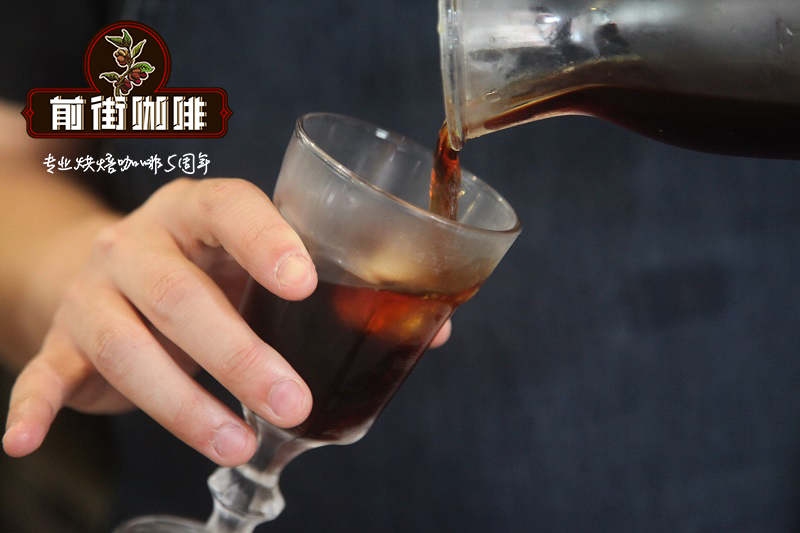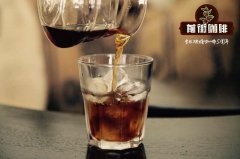Can smell bottles cultivate the ability to distinguish the aroma of coffee? what is the origin of the aroma of coffee?

What substance does the smell of coffee come from?
In 1926, Swiss scientist Reichstein and German scientist Stottinger found that 29 kinds of compounds such as furan, alkylpyrazine, Dione and furfuryl mercaptan were the main components of coffee aroma, among which furan compounds were the most important. the aromas of caramel, nuts, cream, almonds and fruits in coffee are all related to furan compounds.
Since 1960, scientists have isolated more than 300 compounds from raw coffee beans, with more roasted coffee beans, at least 850.
The origin of the aroma of coffee
Enzyme action
Coffee beans are the seeds of coffee. In the process of metabolism, they secrete enzymes to decompose macromolecular substances into small molecular substances. In this process, malic acid, citric acid, tartaric acid and other fruit flavor organic acids and esters are derived. In the treatment of coffee, whether in the sun or washing, there is a fermentation stage, in which the coffee fruit is decomposed into lactic acid, acetic acid and other organic acids by yeast or bacteria, increasing the sour flavor of the coffee.
For example, anaerobic fermentation, which is very popular in recent years, is used to retain the delicious and aromatic substances of coffee.
Mena reaction and caramelization
Roasting gives full play to the aroma of coffee. Mena reaction refers to a series of degradation and polymerization of monosaccharide carbohydrates and amino acids, which runs through the whole roasting process. Monosaccharides react with amino acids at different temperatures to produce many complex aromas, such as nuts, almonds, cream, chocolate and other aromas from the Mena reaction. Caramelization is the oxidation and browning of sugars in the process of heating, resulting in aromas such as honey, maple syrup and caramel.
Light roasted coffee has obvious aromas of flowers and fruits, while medium and deep roasted coffee emphasizes aromas such as nutty cocoa caramel.
Discrimination of coffee aroma
The aroma of coffee is very numerous and complex. In order to facilitate people to identify the aroma of coffee, French Jean Lenoir has made 36 smell bottles (Le Nez Du Cafe) according to the aroma of coffee, which belong to soil, vegetables, dried plants, wood, spices, flowers, fruits, animals, roasting, chemistry, enzymatic group, caramel group, distillation group and defect group.
Smell bottles can help beginners systematically train their senses and effectively help beginners correct their sense of taste and smell, but it is not recommended to rely too much on smell bottles. After scent feeling training, you can also try more substantive fruits, nuts and so on, which helps to identify the aroma and flavor of coffee. The senses are a cumulative process of experience. Through constant practice and correction, one day you will be able to distinguish the flavor of coffee.
Important Notice :
前街咖啡 FrontStreet Coffee has moved to new addredd:
FrontStreet Coffee Address: 315,Donghua East Road,GuangZhou
Tel:020 38364473
- Prev

How to make Italian Creative Coffee and share the production methods of several Italian Special Coffee
Sharing several special coffee making methods Kalua coffee is said to be better suited to rainy days in summer in Guangzhou, except for hot dog days, even continuous plum rain. Imagine that it is raining heavily in the street and your shoes and trousers are drenched. Passing by a warm cafe and having a cup of Kalua coffee based on sweet wine is enough to fill the empty mood.
- Next

The practice of Norwegian Egg Coffee what is the difference between Norwegian Egg Coffee and Vietnamese Egg Coffee
Norway is located in the Nordic region, where it is cold, and traditional Norwegian people are used to unfiltered boiled coffee. Norwegian Egg Coffee is also called Scandinavian Coffee. When making, you need to mix raw eggs, coffee powder and water. It's easy to fry chicken. It has no bitter taste, elegant and smooth, with aromas of baking and cheese. If you can't go to the local area to taste it in person
Related
- Beginners will see the "Coffee pull flower" guide!
- What is the difference between ice blog purified milk and ordinary milk coffee?
- Why is the Philippines the largest producer of crops in Liberia?
- For coffee extraction, should the fine powder be retained?
- How does extracted espresso fill pressed powder? How much strength does it take to press the powder?
- How to make jasmine cold extract coffee? Is the jasmine + latte good?
- Will this little toy really make the coffee taste better? How does Lily Drip affect coffee extraction?
- Will the action of slapping the filter cup also affect coffee extraction?
- What's the difference between powder-to-water ratio and powder-to-liquid ratio?
- What is the Ethiopian local species? What does it have to do with Heirloom native species?

